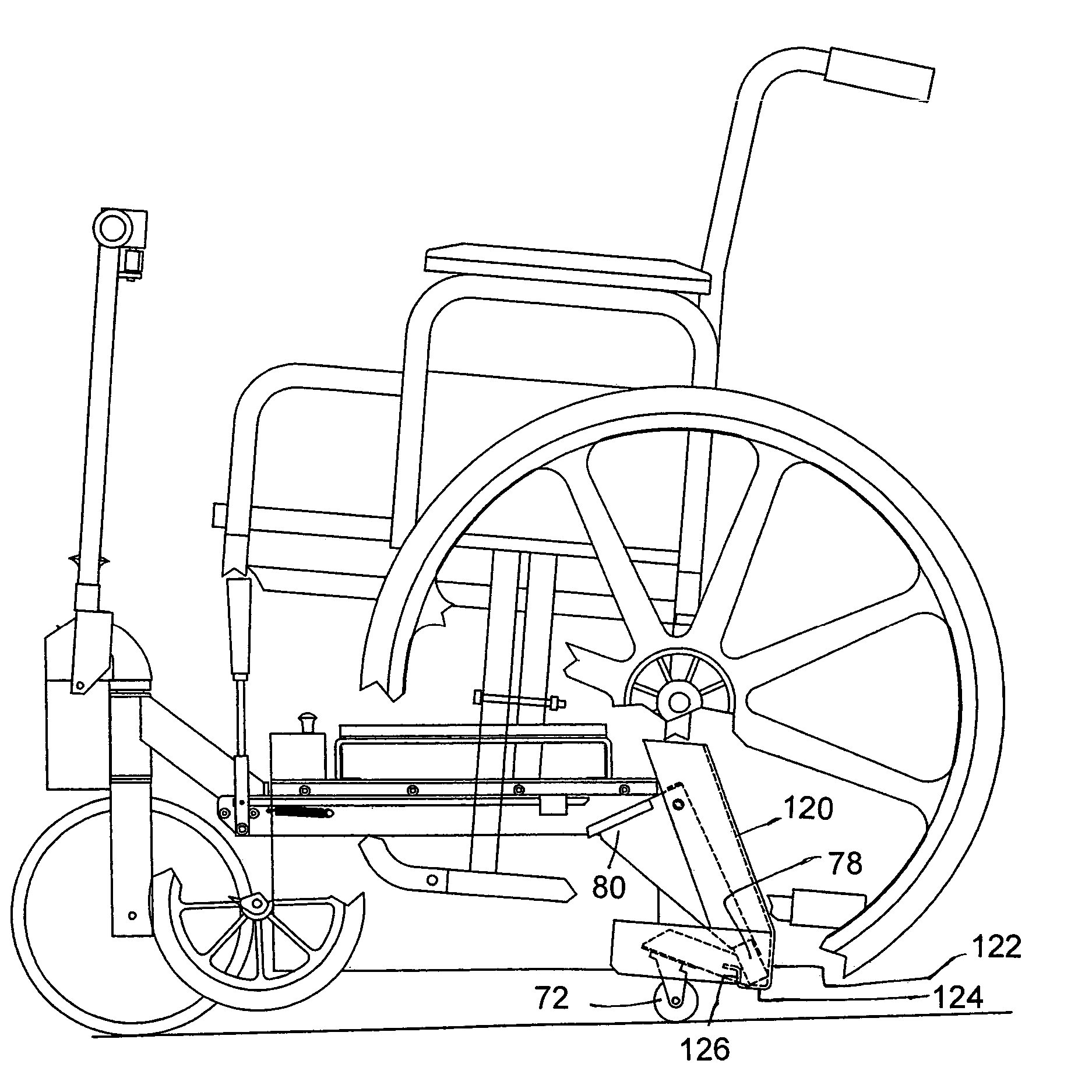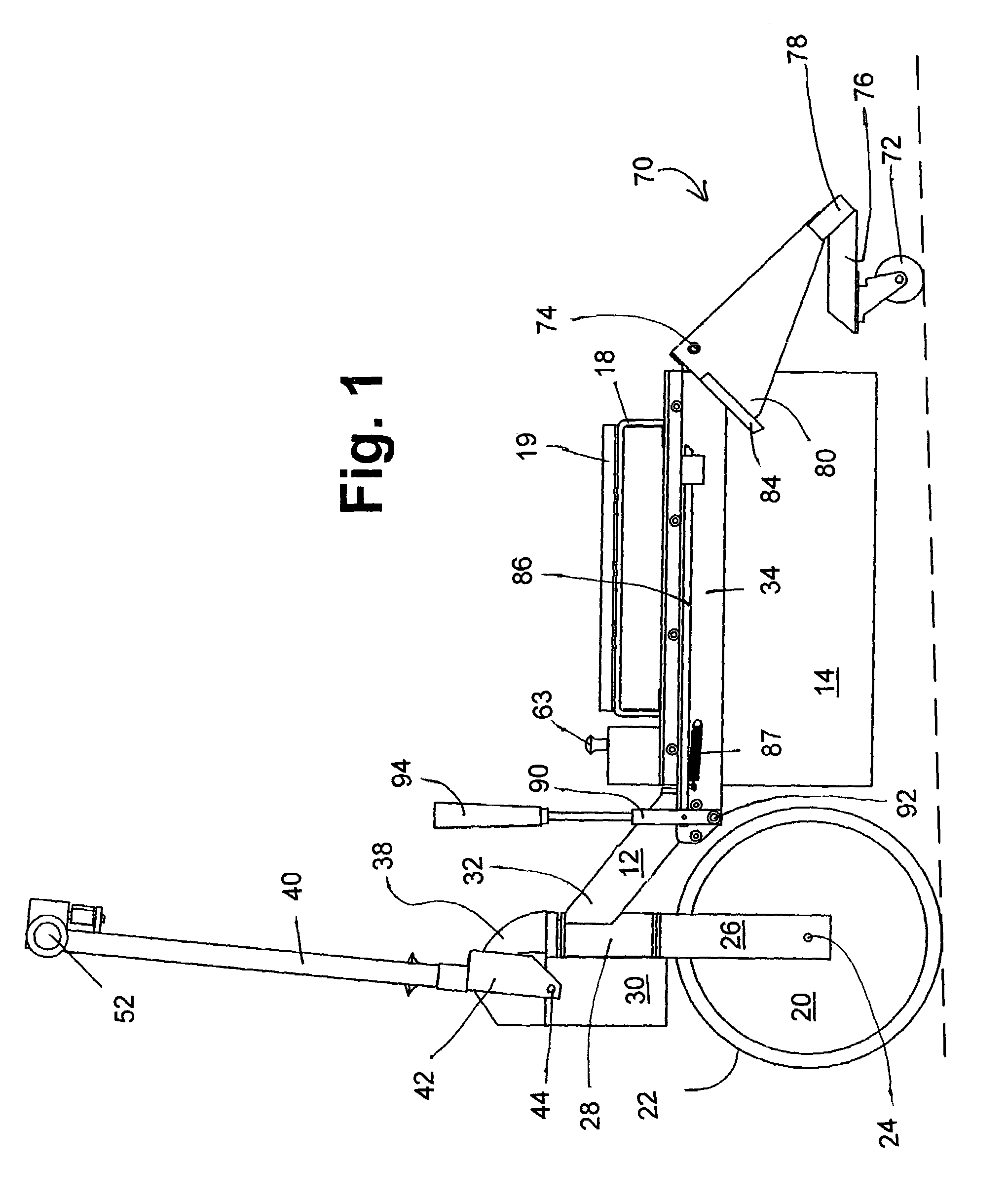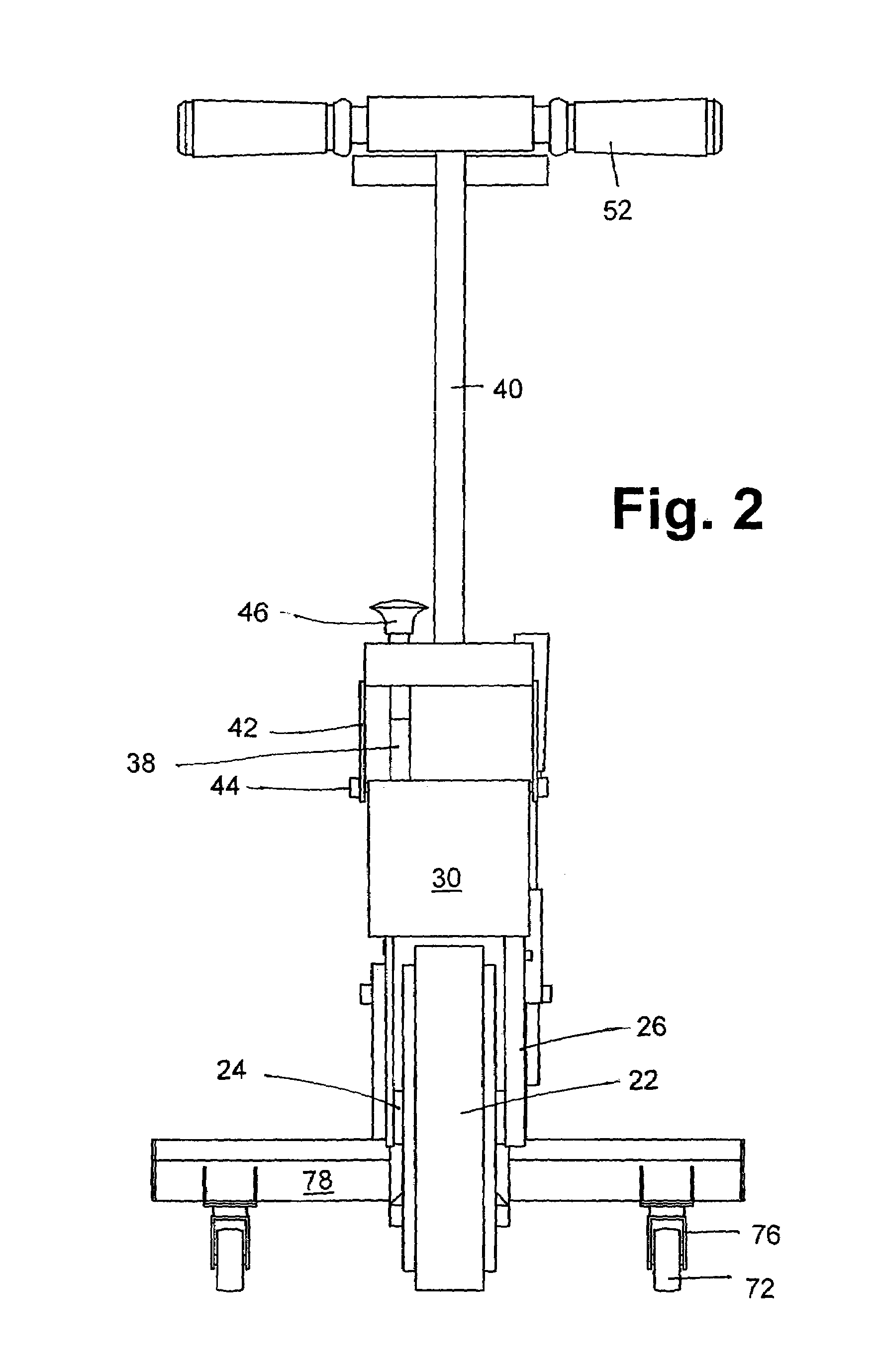Wheel chair apparatus and method
a technology of wheel chairs and apparatuses, which is applied in the direction of wheelchairs/patient conveyances, transportation items, cycles, etc., can solve the problems of cumbersome installation and transportation, large space requirements for storage units, and substantial obstacles to mobility and everyday tasks, etc., to achieve the effect of reducing the space required for storage units, quick and easy, and improving traction
- Summary
- Abstract
- Description
- Claims
- Application Information
AI Technical Summary
Benefits of technology
Problems solved by technology
Method used
Image
Examples
Embodiment Construction
[0046]Referring to the accompanying drawings in which like reference numbers indicate like elements, FIGS. 1, 2, 3, 4 and 5 are side, front, side and top views, respectively, of the wheel chair motor drive of the present invention. FIG. 15 shows the motor drive apparatus 10 engaged with a wheel chair.
[0047]The wheel chair motor drive apparatus 10 is comprised of a frame 12 and, when assembled, a battery housing 14.
[0048]Drive wheel 20 comprises the housing for a high torque electric motor (not shown) within the wheel in the depicted embodiment. The wheel 20 is also the rotor of the electric motor, as well as the casing for the stator housed within it. The motor and wheel 20 are coaxial in the depicted embodiment. The wheel 20 also has a friction surface or tread 22 disposed circumferentially thereon.
[0049]The drive wheel axle 24 supports drive wheel forks 26. The forks 26 are fixedly attached to a fork bearing journal 28 which is substantially vertical in the depicted embodiment.
[00...
PUM
 Login to View More
Login to View More Abstract
Description
Claims
Application Information
 Login to View More
Login to View More - R&D
- Intellectual Property
- Life Sciences
- Materials
- Tech Scout
- Unparalleled Data Quality
- Higher Quality Content
- 60% Fewer Hallucinations
Browse by: Latest US Patents, China's latest patents, Technical Efficacy Thesaurus, Application Domain, Technology Topic, Popular Technical Reports.
© 2025 PatSnap. All rights reserved.Legal|Privacy policy|Modern Slavery Act Transparency Statement|Sitemap|About US| Contact US: help@patsnap.com



